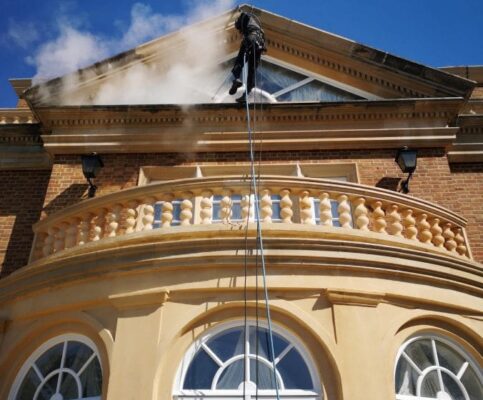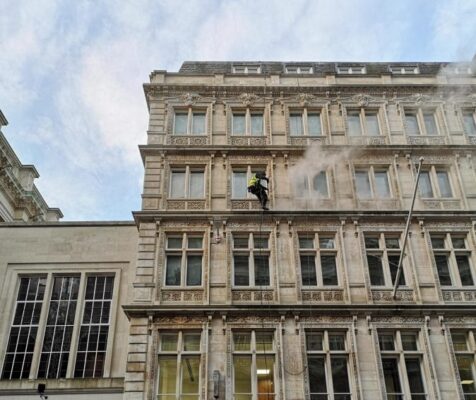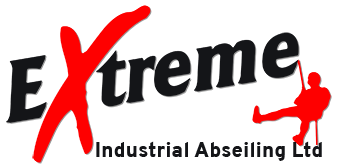View More SErvices Contact Us
Facade Cleaning in Woolwich
Cleaning building facades from top to bottom, no matter how tall your building.
Natural stone facade cleaning in Woolwich can be accessed and cleaned efficiently and effectively by using rope access methods. Using this method, the need for local authority permits is totally eradicated, allowing works to proceed immediately. Using professional stone cleaning equipment we can roll back the years to make your building look like new.
Brick cleaning
Brick buildings become dirty as much as any other building. We will not only clean away the dirt and grime, we can revitalise the colour. Using a range of bio-degradable chemicals, we can restore the colour of red or yellow bricks.
Contact UsGlass facade cleaning in Woolwich
Glass facade cleaning in Woolwich takes place by abseilers using traditional window cleaning tools. External windows, internal atriums, after builders cleaning or regular maintenance cleans, our abseilers are experienced in all manner of glass cleaning.
Contact UsAluminium cladding cleaning
Aluminium cladding in Woolwich can become extremely dirty over time. Warehouses that have many lorries coming and going will become soiled with traffic film. Using our steam cleaning systems, this grime is washed away leaving a lasting first impression for your visitors.
Contact UsOur services
Rope Access Facade Cleaning Services for Woolwich And Surrounding Counties

Residential property Stone Facade Cleaning
Façade cleaning at this residential property in Woolwich, which was not of any great height but, had no access for other forms of access equipment. Abseiling was the solution and the results were outstanding.

Stone Steam Cleaning in London
This beautiful natural stone building was looking tired from the day to day London traffic. Rope access was seen as the most cost-effective method of access.

Concrete Facade Cleaning in Woolwich
This car park in Essex was filthy. It hadn’t been cleaned, ever. As the access to three elevations was extremely tight, abseiling was the only method that could achieve the results.

Facade Cleaning in Woolwich
A new acquisition for our client needed a freshen up. Out of hours abseiling was the best way to clean this building in the heart of the City of London.
Brick colour restoration
Before colour restoration
This client requested a test patch before assigning us the job of cleaning their building. We carried this out with amazing results.
After colour restoration
These are the pictures of the test patch that we sent to the client. Her reaction was simply ‘WOW’. That’s the perfect response for us.
Torik Stone Cleaning System Features
150 degrees centigrade steam cleaning power
Provides a continues flow of superheated water to penetrate stone and deep clean, removing organic growth & ground in dirt.
We use Tensid (uk) Ltd
Providers of specialist cleaning equipment and specialist cleaning chemicals to professionals.
Get In Touch
Fill in the form below and we’ll be in touch within 24hrs of receiving your message.
Facts About Woolwich
Woolwich History
It is generally believed that the name Woolwich derives from an Anglo-Saxon word meaning “trading place for wool”. It is not clear whether Woolwich was a proper -wich town since there are no traces of extensive artisanal activity from the Early Middle Ages. However, in 2015 Oxford Archaeology discovered a Saxon burial site near the riverside with 76 skeletons from the late 7th or early 8th century.
From the 10th till the mid-12th century Woolwich was controlled by the abbots of St. Peter’s Abbey in Ghent. This may have been a result of a gift of 918 from Ælfthryth, daughter of King Alfred and Countess of Flanders, in that case, the first recorded grant of English lands to a foreign ecclesiastic institution.
General Info
Woolwich is a district in southeast London, England, within the Royal Borough of Greenwich. The district’s location on the River Thames led to its status as an important naval, military and industrial area; a role that was maintained throughout the 16th, 17th, 18th, 19th and most of the 20th century. After several decades of economic hardship and social deprivation, the area is now subject to several large-scale urban renewal projects.
It had become apparent that local government in the parish of West Ham was not adequate to meet the needs of the area which was divided between the parish vestry, highway board, and the Havering and Dagenham Commissioners of Sewers. Problems centered on the provision of adequate paving, water supply, fire fighting, and control of development. In 1853 a group of ratepayers initiated moves to improve local administration



